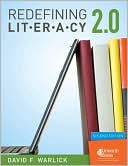Category Books
- Fiction Books & Literature
- Graphic Novels
- Horror
- Mystery & Crime
- Poetry
- Romance Books
- Science Fiction & Fantasy
- Thrillers
- Westerns
- Ages 0-2
- Ages 3-5
- Ages 6-8
- Ages 9-12
- Teens
- Children's Books
- African Americans
- Antiques & Collectibles
- Art, Architecture & Photography
- Bibles & Bible Studies
- Biography
- Business Books
- Christianity
- Computer Books & Technology Books
- Cookbooks, Food & Wine
- Crafts & Hobbies Books
- Education & Teaching
- Engineering
- Entertainment
- Foreign Languages
- Game Books
- Gay & Lesbian
- Health Books, Diet & Fitness Books
- History
- Home & Garden
- Humor Books
- Judaism & Judaica
- Law
- Medical Books
- New Age & Spirituality
- Nonfiction
- Parenting & Family
- Pets
- Philosophy
- Political Books & Current Events Books
- Psychology & Psychotherapy
- Reference
- Religion Books
- Science & Nature
- Self Improvement
- Sex & Relationships
- Social Sciences
- Sports & Adventure
- Study Guides & Test Prep
- Travel
- True Crime
- Weddings
- Women's Studies
Redefining Literacy 2.0 » (2nd Edition)

Authors: David F. Warlick
ISBN-13: 9781586833336, ISBN-10: 1586833332
Format: Paperback
Publisher: ABC-CLIO, Incorporated
Date Published: October 2008
Edition: 2nd Edition
Author Biography: David F. Warlick
Book Synopsis
This seminal work on what literacy truly means in the 21st century is filled with big, meaningful ideas. The purpose of this book is not to replace the three Rs, but to expand them to a model for literacy that applies to classrooms which are shape-shifting under the pressures of converging conditions. This is a must-read for all educators!
• Expose meaning from global interactive, multimedia, electronic cybraries
• Employ information for solving challenges and constructing information
• Express ideas compellingly and fluently through technology to a diverse audience
This resource features an associated Wiki web page where readers can access presentation slides, links to blog entries about redefining literacy from the edu-blogosphere, online handouts for conference presentations and workshops, various files associated with this book, and regularly updated web links that have started with Redefining Literacy for the 21st Century.
VOYA
In this newly revised edition, Warlick argues that the goal of technology is not to be infused throughout the curriculum. Rather, he asserts, those involved in the educational process need to redefine what it means to be literate in this era. In this twenty-first-century classroom, the three Rs should be replaced by the three Es: expose the truth, employ information, and express ideas in new ways. Web 2.0 tools can now facilitate deeper reading, what Warlick terms three-dimensional reading (across, down, and deeper). Search techniques need to be taught so that students can learn more independently—learn how to learn. Writing needs to include newer forms of expression for real audiences beyond the boundaries of the classroom. Finally ethics and safety need to be the concerns of all educational stakeholders. Those already conversant with technology will find this book useful, especially as they instruct others in the new tools and the new ways to think about literacy. A wiki Web page to support the book is just one of the resources featured in this new edition. Warlick, though, dismisses the attention being paid in schools nationwide to the basics (the three Rs). Unfortunately in the wake of No Child Left Behind, it might be more prudent to suggest ways in which technology might enhance the learning of those basic skills that are the focus not only of the tests students take but of the measure of the success of classrooms by many. In addition, Warlick never deals with access to this technology. Computers and the requisite software are not always accessible in schools, especially those where poverty is present. His rejection of filters is sound but again needs to be more rooted inthe reality of classrooms across the country that do filter computers that students use. Reviewer: Teri S. Lesesne
Table of Contents
Subjects
 Literacy
Literacy  Computers and literacy
Computers and literacyEducation & Teaching
 Teaching & Teacher Training
Teaching & Teacher Training  Teaching - Classroom Planning & Management
Teaching - Classroom Planning & ManagementEducation & Teaching
 Teaching & Teacher Training
Teaching & Teacher Training  Teaching - Curricula
Teaching - CurriculaNonfiction
 All Nonfiction
All Nonfiction  Education - General & Miscellaneous
Education - General & Miscellaneous
